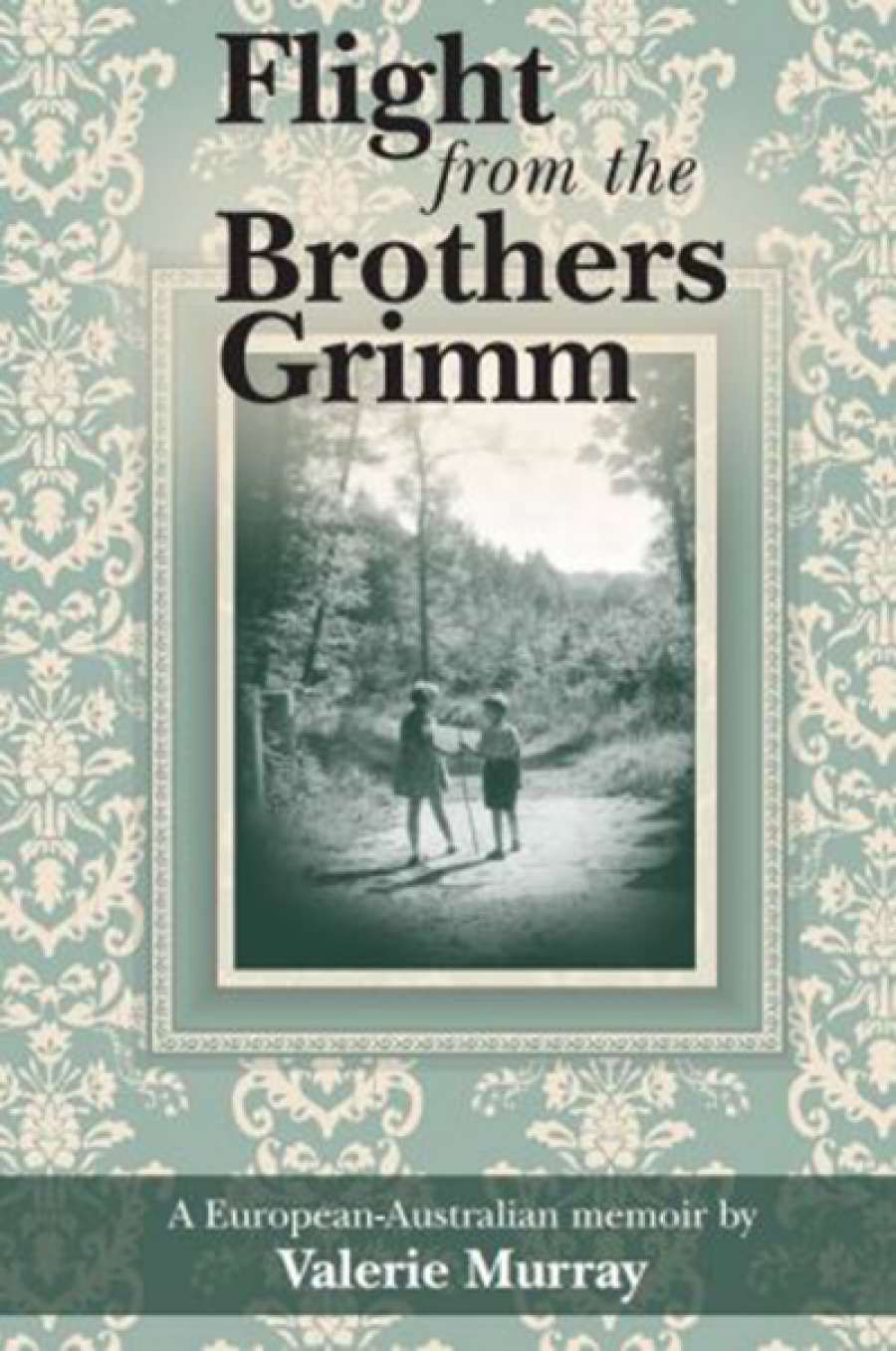
- Free Article: No
- Contents Category: Memoir
- Custom Article Title: Elisabeth Holdsworth reviews 'Flight from the Brothers Grimm: A European- Australian memoir' by Valerie Murray
- Book 1 Title: Flight from the Brothers Grimm
- Book 1 Subtitle: A European- Australian memoir
- Book 1 Biblio: Books Unleashed $20 pb, 184 pp, 9780992592189
In 1944, as the Nazis begin to round up anyone suspected of being a Jew lover, Berta Morelli decides to send three-year-old Valerie and eighteen-month-old Steve to relatives in Zurich. The children travel to Switzerland in the care of nuns. Not once during the long journey do they change the baby’s nappy or offer comfort to the screaming infant. Valerie attributes this experience as setting the stamp on the rest of Steve’s life. For the next year, until they are reunited with their parents, the siblings are passed between their Swiss relatives like inconvenient parcels.
A life is established in Switzerland when the family re-forms. Both parents find work: Berta in the fashion industry, Gino in a publishing house. The children are often left to fend for themselves. To entertain Steve, Valerie reads to him from the Brothers Grimm, ‘so-called fairy tales ... of unembellished cruelty’, but the only reading material to hand. Chance brings the family to Australia rather than to Argentina or South Africa. Gino rejects queuing for the Assisted Migrants Scheme and opts to take his family to the new country as displaced persons. They arrive in Melbourne on the first Tuesday in November and are transported to Bonegilla Migrant Camp (north-east Victoria) on tarpaulin-covered cattle trucks reminiscent of the worst excesses of the war.
In a land of plenty, the Morellis find the food inedible and incomprehensible; grey mutton, pumpkin, and Vegemite. The children hear themselves referred to as ‘bloody reffo’ and ‘bloody Nazi’. They clamour to learn English: ‘to pass muster and turn ourselves into Aussies as fast as possible’.
 Portrait of Valerie Murray, Joe Loudon, c. 1980 (National Library of Australia)The Morelli family settle in Sydney, Gino finds work as a translator, Berta in the rag trade. There is enough money to buy a block of land and begin the construction of a house. The Australian dream is about to be realised. The parents work long hours. On one of their first skiing holidays, Gino and Berta leave the children at home. Valerie is ten, Steve eight. They cope; they have each other. Valerie is considered good at coping on her own, but the parents have doubts about Steve. He is sent to a Catholic boarding school where he is subjected to harsh punishment and abuse, another rejection for an already traumatised child.
Portrait of Valerie Murray, Joe Loudon, c. 1980 (National Library of Australia)The Morelli family settle in Sydney, Gino finds work as a translator, Berta in the rag trade. There is enough money to buy a block of land and begin the construction of a house. The Australian dream is about to be realised. The parents work long hours. On one of their first skiing holidays, Gino and Berta leave the children at home. Valerie is ten, Steve eight. They cope; they have each other. Valerie is considered good at coping on her own, but the parents have doubts about Steve. He is sent to a Catholic boarding school where he is subjected to harsh punishment and abuse, another rejection for an already traumatised child.
On their next skiing holiday, the Morelli parents leave Valerie on her own for a week in a half-finished house. Having begun to menstruate, she suffers from cramps and general misery. Alone in the house at night, she cannot sleep and fears death. She cannot eat due to an irrational fear of choking and she is without her brother, who has been banished to the nightmarish boarding school. Valerie walks the streets near her home late at night, ‘desperately doing my best to stay awake’. The Brothers Grimm have followed the Morelli children to Australia. Valerie Murray offers these passages in flat, unadorned, unjudgemental prose. They are the best things in the book, and they are the most confronting. I found it difficult to maintain empathy for the parents beyond this point.
Valerie, who understands the value of an education, thrives at school. She meets a ‘terribly shy’ Les Murray at Sydney University. At twenty-two, he already wears the campus descriptor, intellectual giant. The couple have five children, one of whom is autistic. Family life, for that matter life with the poet, is not central to the book; Valerie Murray is adamant that these are her own words about her early life; her personal explanation as to why she is the way she is; a project of catharsis and resolution. Yet a friend of the Murrays, on being told that Valerie is writing a memoir, exclaims: ‘Not another bloody migrant memoir!’ In her typically stoic fashion, she writes about feeling downcast.
Seven million people have arrived in this country as immigrants since 1945. The first wave (1945–50) have left us a surprisingly meagre record of their experiences. Valerie Murray’s story is another migrant memoir, but it is a bloody beauty.


Comments powered by CComment